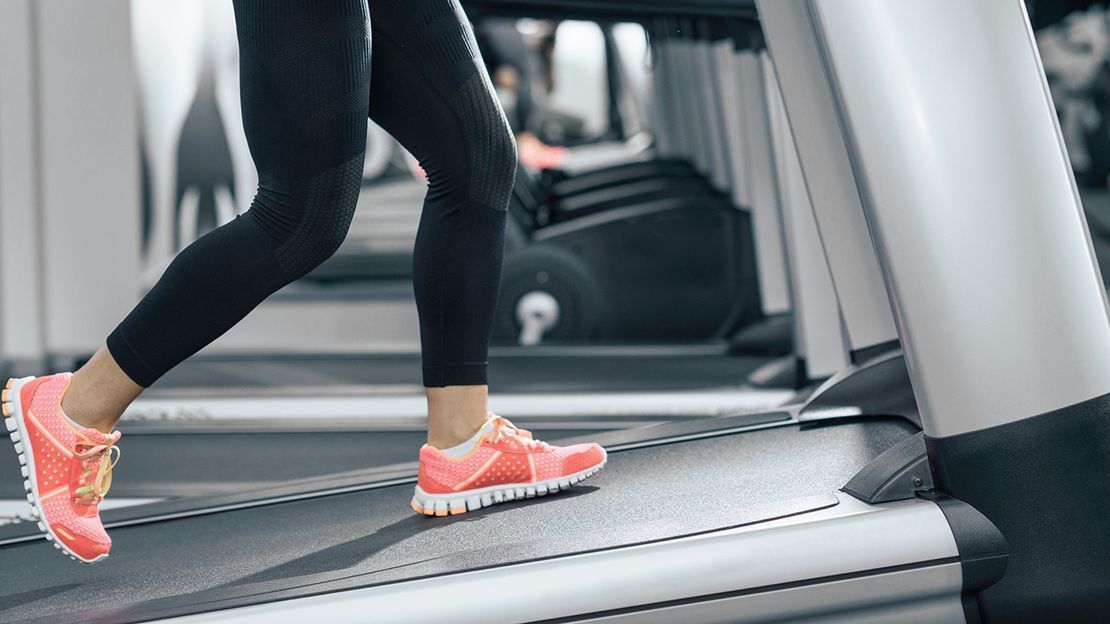If you’ve opened TikTok within the past year (or just found yourself in the cardio section of a gym), chances are you’ve seen or heard of something called the “12-3-30 workout.” It’s actually a fairly simple concept, according to Kara Dudley, a NASM-certified trainer and RRCA-certified run coach based in New York City: Walk at a 12 percent incline at three miles per hour for 30 minutes.
Naturally, to folks who loathe long, monotonous runs on a treadmill, walking at a 3-mile-per-hour pace might seem pretty appealing. Plus, scroll through the thousands of videos of the 12-3-30 workout on TikTok, and you’ll find rave reviews, with exercisers crediting the fitness routine with their weight loss, better endurance, and (ahem) more shapely glutes.
But is the 12-30-workout right for you? And where did it come from, anyways? Read on to learn more about this treadmill workout.
Where did the 12-3-30 workout come from?
Although the 12-3-30 workout trend exploded in popularity in recent years, the routine was devised and posted on YouTube in 2019 by Lauren Giraldo, a social media influencer (it’s important to note that she is not a certified trainer). In the caption for the video, Giraldo notes that she used to have difficulty finding motivation and energy to exercise and says her life “completely changed” after coming up with and sticking to the 12-3-30 treadmill workout.
In a video that Giraldo posted to TikTok in November 2020, she also explains that gyms once intimidated her—and left her unmotivated to move. After she incorporated the 12-3-30 routine into her exercise schedule, she says she lost 30 pounds.
Now, take note: The ability to lose weight is highly individualized and can be impacted by a trove of factors, from genetics to the presence of certain diseases. In other words, it’s important to take Giraldo’s results, along with other general weight loss claims attributed to single factors, with a big grain of salt.
Why try the 12-3-30 workout?
While the 12-3-30 workout trend doesn’t have any scientific research directly tied to its benefits, uphill walking—the activity it’s rooted in—does. “This is a great workout to build glute strength and base level endurance,” Dudley says. Below, more detail on the benefits associated with uphill walking.
1. You’ll fire up several muscles. As Dudley and hordes of 12-3-30 fans on TikTok note, incline walking is a surefire way to activate your glutes. But science says those aren’t the only muscles that will fire up on an incline. A study from the Journal of Foot and Ankle Research found that walking uphill is more successful at stimulating the peroneal muscles (which are below your knees and on the sides of your legs) than walking on a flat surface. And another study found that uphill walking boosts activation in the hip, knee, and ankle extensors when compared to flat surfaces. According to Dudley, all of that could help the average exerciser prevent injury and move more effectively in their daily life.
2. You might burn more calories. A study from the Journal of Biomechanics found that, compared to walking on flat ground, uphill walking has a greater metabolic cost (in other words, it requires more energy).
3. It might be more comfortable than running. Whether due to personal workout preference or joint pain, running isn’t always everyone’s favorite form of cardio—and uphill walking can be a suitable replacement. “This is a workout that is accessible to most people regardless of their level of fitness,” explains Dudley.
How do you do the 12-3-30 workout?
You know the basics of the 12-3-30 workout, but below, Dudley explains exactly how to go about it.
Perform a dynamic warm-up first.
“I would advise doing a dynamic warm-up to make sure your glutes, quads, and hamstrings are warmed up and activated,” Dudley says. Here’s a routine she recommends:
- Shoulder rolls from front to back (10 reps rolling forward and 10 reps rolling backward)
- Leg swings (10 reps on each side)
- Forward lunges (5 reps on each side)
- Backward lunges (10 reps on each side)
- Air squats (10 reps)
- High knees (20 reps)
- Butt kickers (20 reps)
Next, find a treadmill.
A Woodway treadmill (if you have access to one), is great for simulating outdoor walking, according to Dudley. Plus, she says it has traction that will help you feel stable walking on an incline.
Start on a flat surface.
Dudley suggests walking on a flat surface for two to five minutes at three miles per hour to round out the warm-up.
Begin the 12-3-30 workout.
Dudley says that keeping your arms at a consistent 90-degree angle (and not bracing yourself on the treadmill’s handles) is important. “Pump [your arms] by pushing your elbows behind you to get some momentum to be able to walk up the incline,” she says, adding that you should also keep your chest tall and proud throughout the cardio workout. Continue to walk at a 12 percent incline (go straight there from the warm-up as long as you feel capable), moving three miles per hour, for 30 minutes.
Don’t forget a cooldown.
Dudley recommends walking on a flat surface for two to five minutes at three miles per hour to allow your body to cool down.
Tips for Incorporating the 12-3-30 Workout Into Your Regimen
Dudley notes that you don’t necessarily have to jump into the 12-3-30 workout with those exact metrics—or be doing it every day to reap the benefits.
“If you’re a beginner to fitness, [doing the 12-3-30 workout] once per week is a great place to start,” she explains. “Then try to increase to two and then three days from there, week over week.”
The workout can also be broken into segments, per Dudley. “You can start out by walking [at three miles per hour] for five minutes at a 12 percent incline, walking on a 0 percent incline for one minute, then repeating that [pattern] until you get to 30 minutes,” she says.
Another approach if you’re worried about moving at a 12 percent incline for the full 30: slowly build up the incline. Dudley recommends starting with five percent, then moving to seven, nine, and finally 12 percent, for 30 minutes.
Regardless of your approach, don’t forget to add in other forms of movement, Dudley says. “I would also recommend working strength into your routine in tandem with this workout.” (You can learn more about the strength training activities you should be including in your workout routine here.)
As for who shouldn’t do the 12-3-30 workout, Dudley says that if you’re training for a race, like a 5K or half marathon, it’s best to skip this one. “Although this workout is still targeting cardio and a bit of strength, you will need something more focused and customized to your goal for running,” she says.


